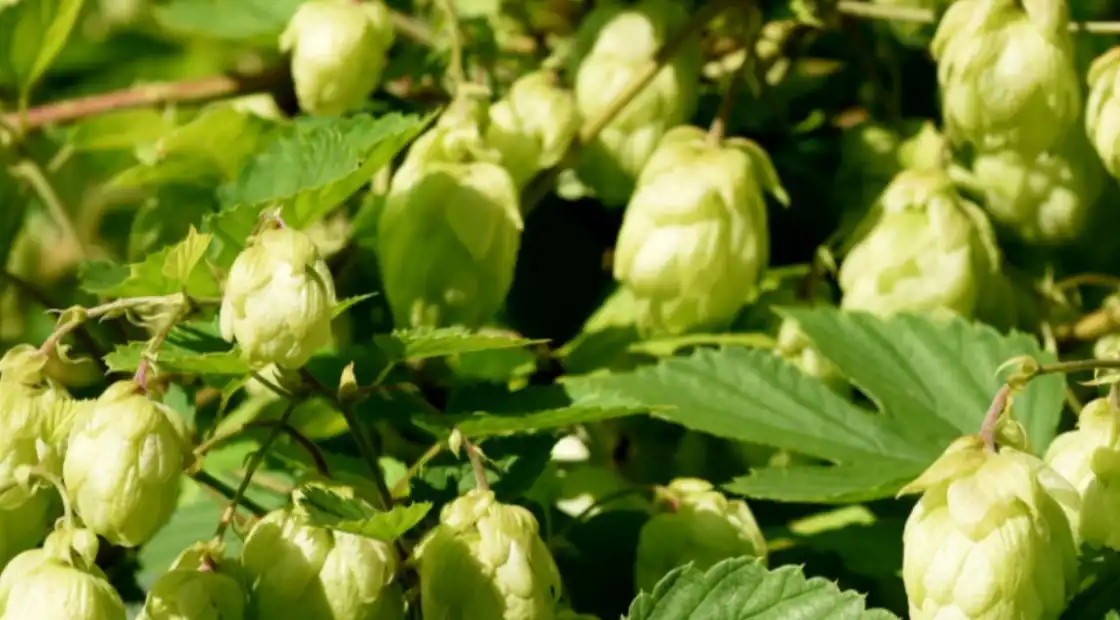Regards croisés: producing hops in the Grand Ouest region

The challenges of hop production in France presented at SIVAL
Georges COULON and Guillaume SALAUN, both hop growers, spoke at SIVAL 2024 about the challenges and prospects for hop growing in France. Today, hops cover a surface area of around 700 hectares in France, divided between 175 growers, and include 68 varieties for a total production of 900 tonnes. However, this production remains modest, accounting for just 1% of world hop production, dominated by players such as Germany and the USA, with 20,000 and 24,000 hectares respectively. From an organic point of view, this segment is growing slowly, with 200 hectares under organic cultivation and a production of 200 tonnes.
Setting up a hop farm requires substantial investment. In Brittany, for example, estimated costs range from €60,000 to €80,000 per hectare, while in the Pays de la Loire region, the figure is as high as €100,000, including structures, buildings and equipment. It should also be noted that this crop reaches its optimum yield from the third year onwards, and is intended to be farmed for around 20 years. Pooling efforts between growers plays a key role. In Brittany, growers group together under brands such as "Bretagne Houblon", producing 15 to 20 tonnes a year from 12 hectares. In other regions, such as Pays de la Loire and Île-de-France, groups like GI2R (Houblons de l'Ouest) encourage the sharing of resources and know-how. Nevertheless, a large proportion of growers remain independent when it comes to marketing.
The challenges of the organic market and outlets for hops
The discussions at SIVAL highlighted the growing challenges facing organic hop producers in France. Upstream, French breweries, though numerous, are mainly attracted by foreign hops with renowned aromas, such as those from the USA or New Zealand. This makes it difficult to market French varieties, despite their recognized quality. To date, only 30% of some Breton production is consumed locally, and even with attractive offers, large stocks remain unsold, resulting in significant economic losses estimated at 100,000-150,000 euros for some producers.
On a structural level, the market is also saturated due to the gradual increase in volumes following new installations. This has a negative impact on sector, all the more so as microbreweries, the main consumers of local hops, are also subject to strong economic pressures, such as inflation or the vagaries of seasonal consumption. Export can be a viable solution, as illustrated by the experience of a Breton producer who found his biggest outlet in Latvia. However, the relocation of hop purchases by major French breweries remains a priority, according to those involved. These breweries still too often prefer imports, despite the equal or superior quality and competitive prices of French production.
Agronomic conditions and disease control
The two growers present at SIVAL also discussed the agronomic requirements of hops and their sanitary vulnerabilities. Choosing well-exposed, well-draining plots with low clay content is crucial to the success of this perennial crop. Water availability is also essential, with each plant requiring between 10 and 12 liters of water per day between May and July. Hydromorphic or poorly drained soils in winter must be avoided at all costs, otherwise the plant's deep root systems will be compromised.
From a health point of view, hops are particularly sensitive to mildew, a major problem requiring rigorous management. In organic farming, the tools available to combat this disease are essentially limited to copper, the use of which is strictly limited to a maximum of 4 kg per hectare or 28 kg over seven years. Alternative solutions such as rock powders and essential oils are currently being tested to reduce the impact of mildew. In addition, the choice of varieties is strategic in preventing other common pathologies such as aphids and powdery mildew.